Pelican Rise 100X is the most affordable of Pelican's 10 ft boats. With its basic Ergobase seat, no thigh pads and only one non-waterproof storage hatch in the back, it is a no-frills package for those on a budget.
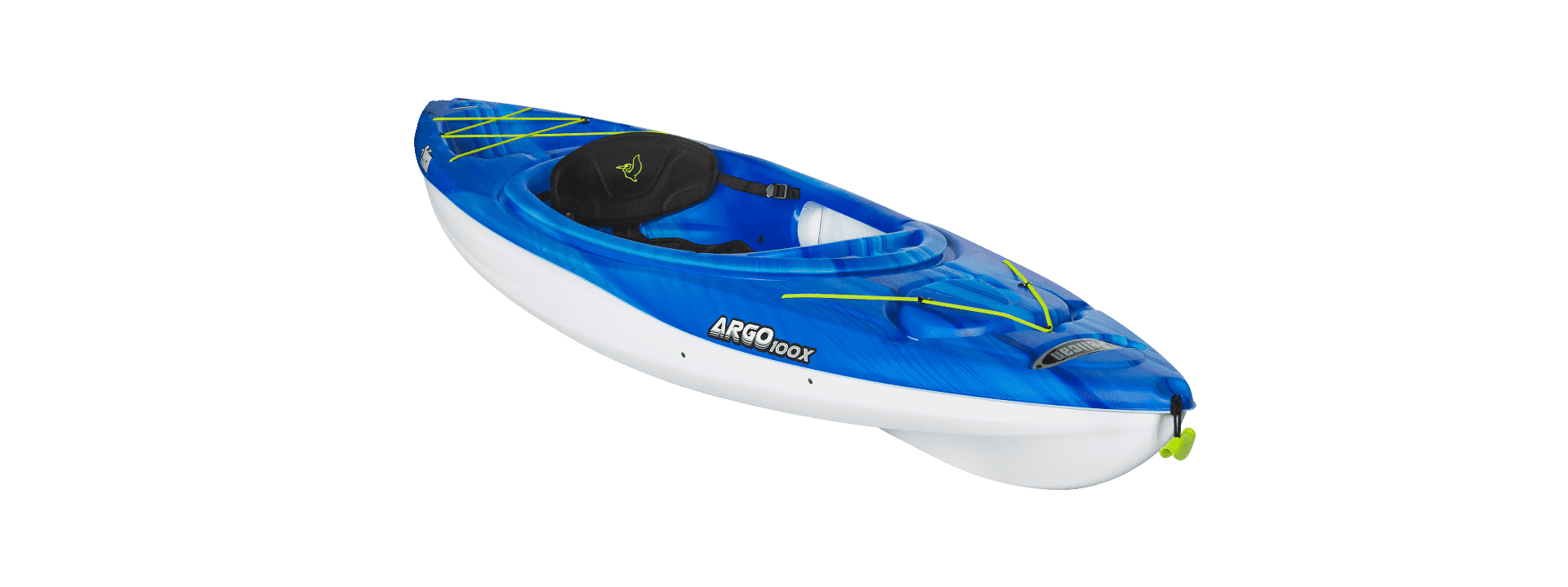
Pelican Argo 100X is one of Pelican International’s most popular 10 ft kayaks. It offers a well-balanced package for beginner paddlers.
Pros:
- Lightweight
- Very stable
- Affordable
Cons:
- Does not come with a paddle
- No thigh pads
- No dry storage
Pelican International the world’s largest manufacturer of beginner-level recreational kayaks. Go to your nearest kayaking location, and chances are, you will see at least a couple of Pelicans on the water.
Here, we examine one of Pelican’s most popular recreational kayaks, the Argo 100X.
As an affiliate of Amazon and other retailers, we may earn a small commission when you buy via our links, at no additional cost to you. Thank you!
Size and Weight
The Pelican Argo 100X is 10 ft (305 cm) long by 28 in. (71 cm) wide. The deck height is 14 in. (36 cm). At 36 lb (16.3 kg), the Argo is a little lighter than Pelican’s cheapest 10 ft model, the Rise 100X (38 lb or 17.4 kg) but a little heavier than another popular model, the Trailblazer 100 NXT, which weighs 35.6 lb (16.2 kg). All models share the same hull design, so the weight differences are due to different seats and storage options.
Capacity
Like all other models with the same hull design, the Argo can carry up to 275 lb (125 kg). This includes you, your clothes, your gear and your paddle, so you might need a bigger boat if you’re a bigger person.
Construction and Material
The Pelican Argo 100X is made by thermoforming. This is a process where a mold is pressed into a heated sheet of plastic.
Pelican uses multilayer polyethylene plastic called RAM-X. It is pretty durable and impact-resistant. It also regains shape easily in case of deformation.
Pelican also stresses that it uses a lot of recycled plastic for its boats and recycles over 90 percent of leftover plastic from its production. If you are an environmentally conscious person (which we all should be), this is important to know.
Cockpit
The Argo has quite a large cockpit: 50 in. (127 cm) by 24.5 in. (62.2 cm). This should give you ample room inside the boat. For comparison, Pelican Trailblazer 100NXT, which is one of Pelican’s most popular boats, offers a somewhat smaller cockpit, 42.5 in. (108 cm) x 20.5 in. (52 cm). In most cases, even the Trailblazer won’t be too tight. However, if you’re really tall and need as much room as possible, you should take a look at Pelican Rise 100X with its giant cockpit of 54.8 in. (139 cm) by 25 in. (63.5 cm).
Seat
The Argo 100X features Pelican’s Ergoform™ adjustable backrest and the corresponding Ergoform™ seat. It is a step up from the basic Ergobase™ seat (both the Rise and the Trailblazer have Ergobase™ seats). The Ergoform™ seat offers a little more cushioning and some ventilation, which will be welcome on longer trips or hotter days.
Thigh Pads
The kayak has no thigh pads which add a lot of comfort while paddling. Unless you are really on the budget, we recommend spending a little to get a model that has them. Unfortunately, Pelican does not sell the thigh pads separately (which they should).
Footrests
The Argo 100X has molded footrests with four different positions. These are useful if you have different people using the kayak because they need no adjustment. However, the positions are about 5 inches apart, and if your ideal length is in between, you’re out of luck.
The good thing, however, is that some retailers sell the Argo 100X with adjustable footrests. Adjustable footrests let you set the footrests exactly where you want them, providing a better position and more comfort.
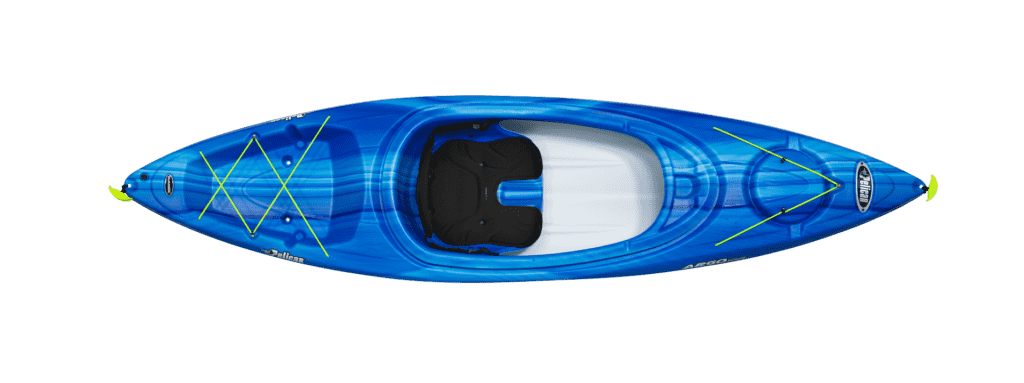
Paddle Holder
Pelican Argo 100X has a pair of indentations on the rim of the cockpit. They are designed to keep your paddle from rolling when you put it across the cockpit. Sadly, the Argo does not have a bungee-secured paddle holder on the side. There is no paddle park on the front deck, either, although you could try putting the paddle blade under the bungee cord that supports the front hatch.
Storage
Pelican Argo 100x offers just about enough storage for short recreational trips. On the front deck, there is a large hatch (not waterproof) and a bungee cord above it. In front of the cockpit, there is a kind of molded table with a bottle holder and a couple of compartments for small items. You get another bottle holder molded into the seat, right between your legs. It is tilted so it won’t hold an open container (a water bottle is fine). Finally, there is a decently sized tank well on the stern, complete with a bungee cord to hold your bags in place. You can easily load the Argo 100X with enough gear for an overnight trip.
Handles
Pelican Argo 100X has two strap-based carrying handles, one in the front and one in the back. These are useful as you can just grab a handle and drag the boat to or from the water. However, with light boats like the Argo 100X, you can simply put your shoulder inside the cockpit and carry the boat around. This will also protect the hull from scratches.
IMPORTANT: if you transport the kayak on top of your car, do not use the handles to strap the boat to the car. The handles are not designed to resist forces that the wind creates at high speeds. Instead, Pelican recommends that you buy a couple of S-shaped steel hooks from a hardware store and put those in the holes where the handles are attached. Also, don’t forget two lateral straps to secure the boat.
Stability
Just like Pelican’s other entry-level boats, the Pelican Argo 100X has a multichine twin-arch hull, which gives it a lot of stability on calm water. This hull shape is ideal for recreational kayaking as long as you stay away from white water or big waves, which you should in this kayak.
Here’s a chart from Pelican that explains different hull types:

Pelican even shot a video to show how stable its kayaks are:
Maneuverability and Tracking
The Pelican Argo 100X is a short boat. It is easy to turn, which makes it easy to paddle in tight places where a longer boat would be harder to handle.
On the flip side, shorter boats do not track as well. They are susceptible to winds and waves and are harder to keep on course. If you’re just paddling around on a small lake (which recreational kayaks like that are designed for in the first place), you’ll be just fine. On longer trips, you’ll want a kayak that tracks better, which usually will be a longer kayak.
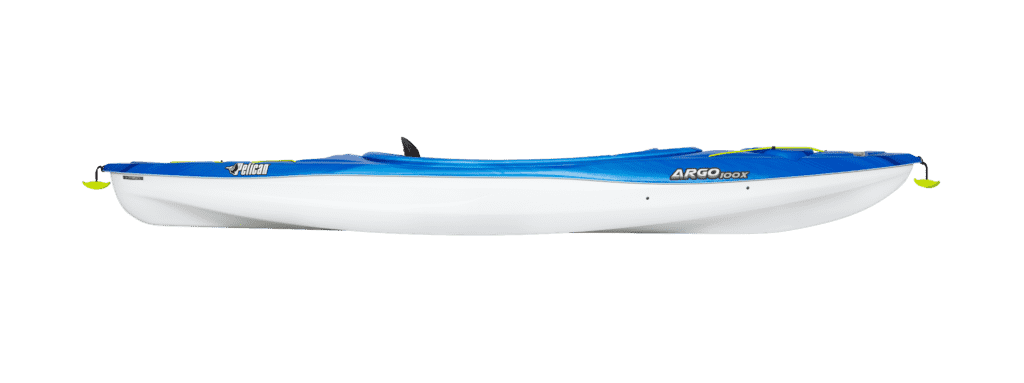
Speed
In general, the longer the boat, the faster it will be (there’s some advanced physics behind that which we will not delve into). 10 ft boats are not fast, and neither is Pelican Argo 100X. You will have enough speed to paddle small lakes and rivers and have a lot of fun on the water. But if you plan to go on longer trips, cover large distances or do kayak camping, you might want to look at longer boats (these are normally referred to as touring kayaks).
Durability
In general, polyethylene kayaks are very durable. Pelican uses a layered sheet polyethylene that it calls RAM-X and prides itself on the toughness and durability of its boats. They even shot a series of short videos to demonstrate how indestructible their kayaks are:
In any case, it is good practice not to drag your kayak on hard surfaces such as concrete boat launches, stones, gravel etc. Even though the kayak is impact resistant, it is not extremely abrasion resistant, and you can literally rub a hole in it by dragging it around too much.
Due to the boat’s low weight, you should not have any problems carrying it to the water. If that is not an option, consider using a kayak cart. This will prolong your kayak’s life considerably.
Care
Polyethylene kayaks require very little care and maintenance. However, there are some basic rules to follow:
INSPECT THE HULL FOR DAMAGE. As strong as it may be, your kayak’s hull can be damaged by abrasion or sharp objects. Holes and cracks in a polyethylene hull can be tricky to fix and usually require heat and patches (see some instructions here and here).
The hull can also be deformed during off-season storage. In that case, some heat (such as from the sun) will usually be enough to return the hull to its shape.
CHECK THE RIGGING. Bungee cords and other hardware on your kayak can deteriorate from time and the sun. It is a good idea to inspect everything before the season and replace anything that’s damaged or worn.
KEEP IT DRY AND CLEAN. Your kayak does not have to shine, but it’s a good idea to rinse or spray it after each use, and then let it dry. This will prevent the mold from growing and will decrease abrasion from the sand. Also, if you paddle in the sea, rinse the boat off with fresh water to stop corrosion from the salt.
STORE AWAY FROM THE SUN. Direct sunlight is harmful to almost any plastic. Leaving your boat under the sun for a few days is OK, but in the off-season, try to find a place indoors or at least cover the kayak from the sun.
COVER THE COCKPIT. If you store the kayak outside, covering the cockpit will keep the rain, dust, and mice/spiders/whatever away. Make sure the cockpit is completely dry before you cover it.
TRANSPORT WITH CARE. A lot of the damage occurs when the kayak is being transported. Take extra care when putting it on and taking it off your vehicle.
Warranty
Pelican offers a limited lifetime warranty on its RAM-X™, RAM-X PREMIUM™ and POLY-XR™ boats (hull and deck) and a 1-year warranty on product component parts and accessories.
IMPORTANT: Pelican’s website says the warranty applies only if you register for it within 30 days following the date of purchase. Registration can be done either via their website (click here) or by completing and returning the registration card found in your owner’s manual.
You can find the complete terms and conditions of the warranty on Pelican’s website here.


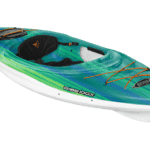
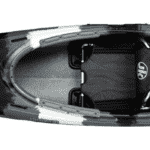

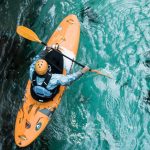

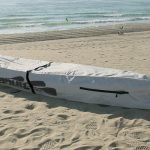
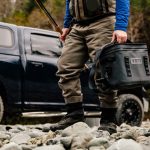


I have a pelican argo 100x. I transport them using a 58 inch wide roof rack. Using foam noodles…what is the best way to transport them? Upside down or upside up? We have a third same make/model and will eventually be transporting this one with the other two? Any recommendations?
Thank you
Mark